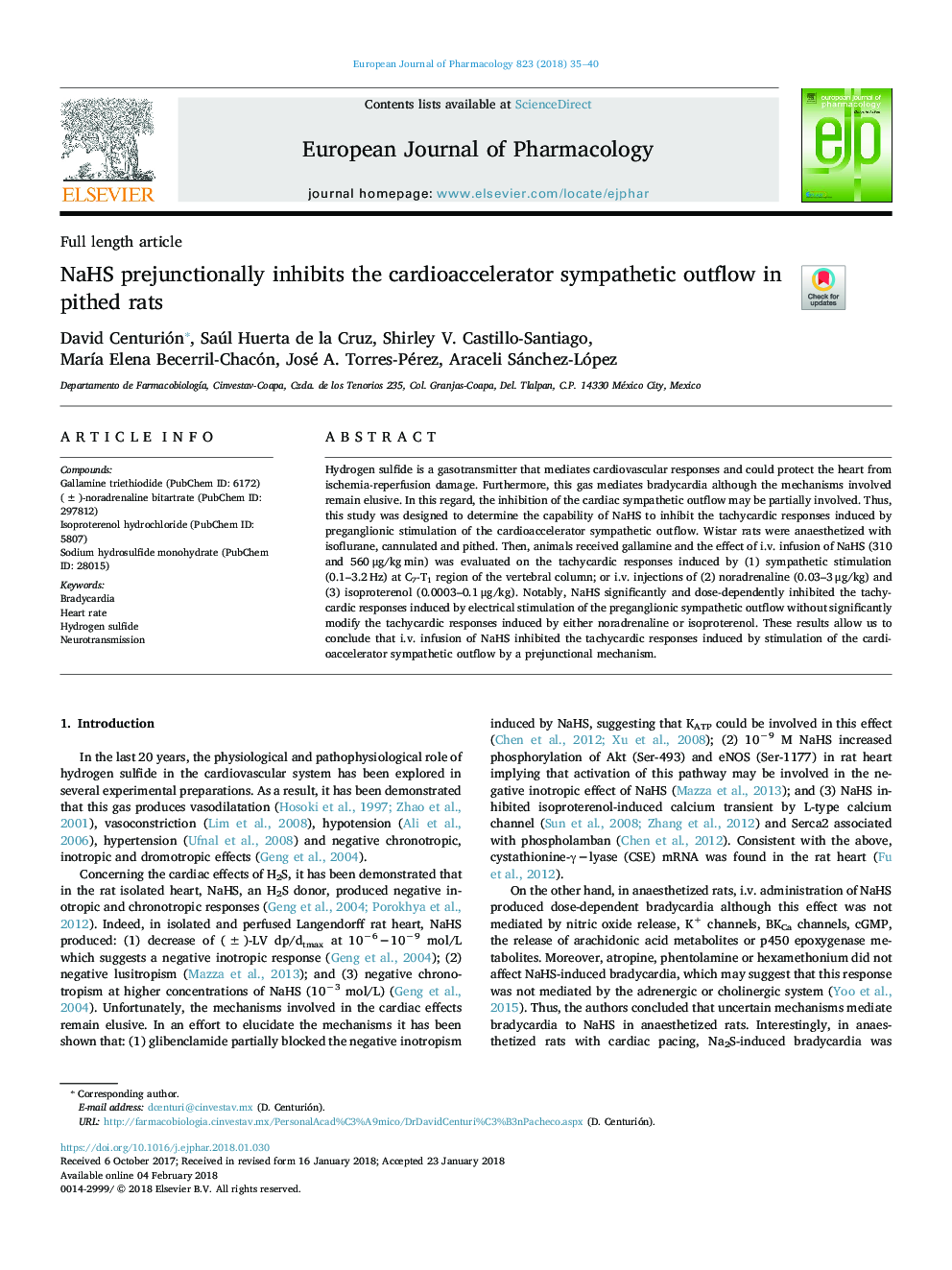| Article ID | Journal | Published Year | Pages | File Type |
|---|---|---|---|---|
| 8529342 | European Journal of Pharmacology | 2018 | 6 Pages |
Abstract
Hydrogen sulfide is a gasotransmitter that mediates cardiovascular responses and could protect the heart from ischemia-reperfusion damage. Furthermore, this gas mediates bradycardia although the mechanisms involved remain elusive. In this regard, the inhibition of the cardiac sympathetic outflow may be partially involved. Thus, this study was designed to determine the capability of NaHS to inhibit the tachycardic responses induced by preganglionic stimulation of the cardioaccelerator sympathetic outflow. Wistar rats were anaesthetized with isoflurane, cannulated and pithed. Then, animals received gallamine and the effect of i.v. infusion of NaHS (310 and 560â¯Î¼g/kgâ¯min) was evaluated on the tachycardic responses induced by (1) sympathetic stimulation (0.1-3.2â¯Hz) at C7-T1 region of the vertebral column; or i.v. injections of (2) noradrenaline (0.03-3â¯Î¼g/kg) and (3) isoproterenol (0.0003-0.1â¯Î¼g/kg). Notably, NaHS significantly and dose-dependently inhibited the tachycardic responses induced by electrical stimulation of the preganglionic sympathetic outflow without significantly modify the tachycardic responses induced by either noradrenaline or isoproterenol. These results allow us to conclude that i.v. infusion of NaHS inhibited the tachycardic responses induced by stimulation of the cardioaccelerator sympathetic outflow by a prejunctional mechanism.
Related Topics
Life Sciences
Neuroscience
Cellular and Molecular Neuroscience
Authors
David Centurión, Saúl Huerta de la Cruz, Shirley V. Castillo-Santiago, MarÃa Elena Becerril-Chacón, José A. Torres-Pérez, Araceli Sánchez-López,
